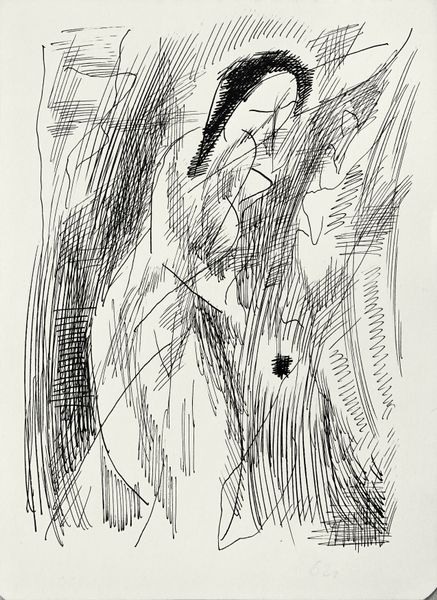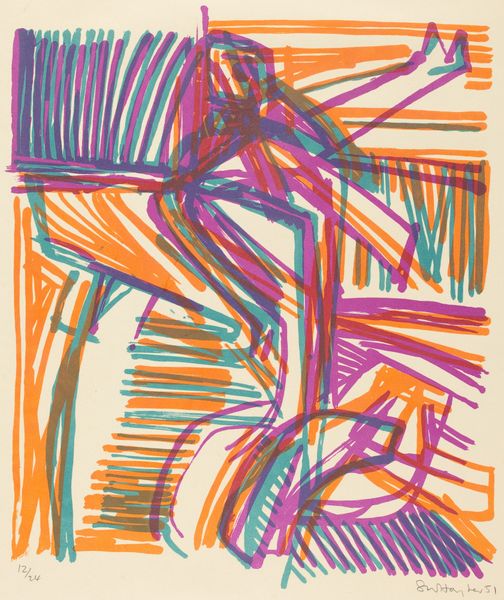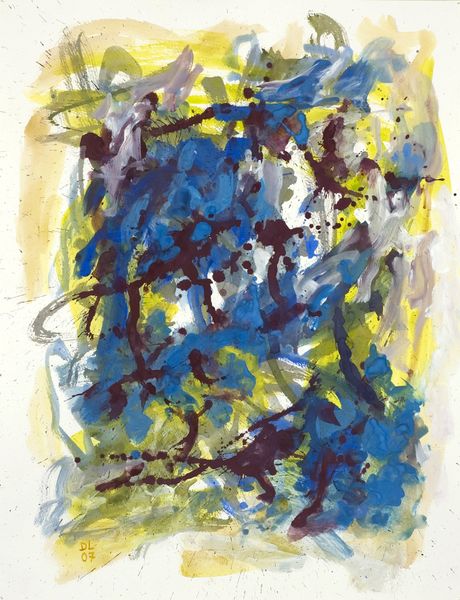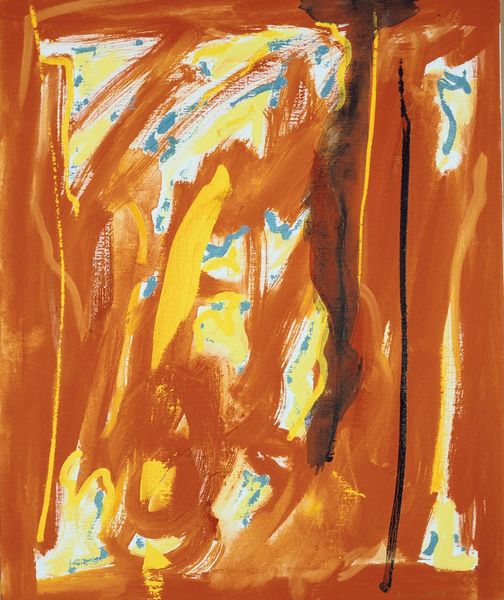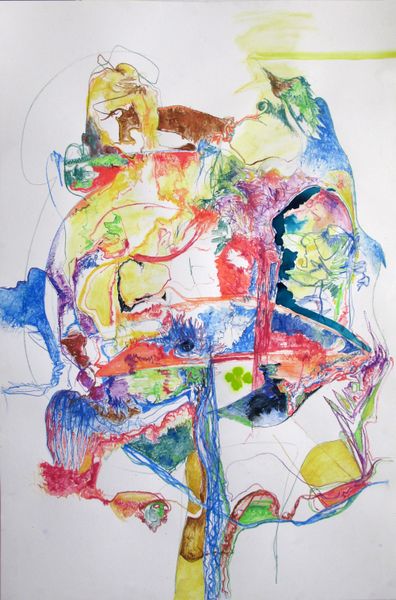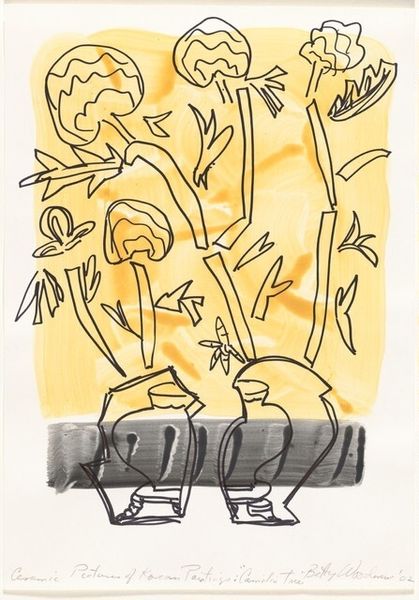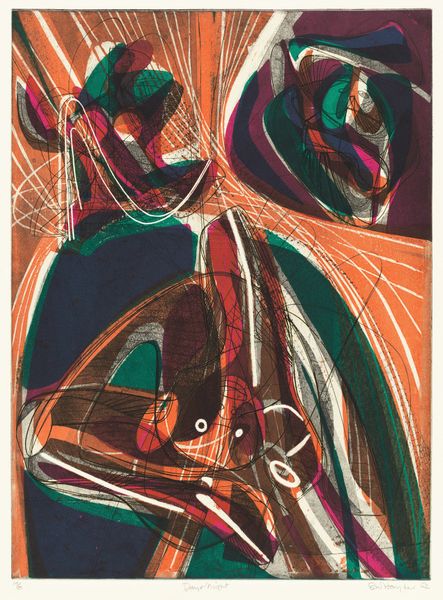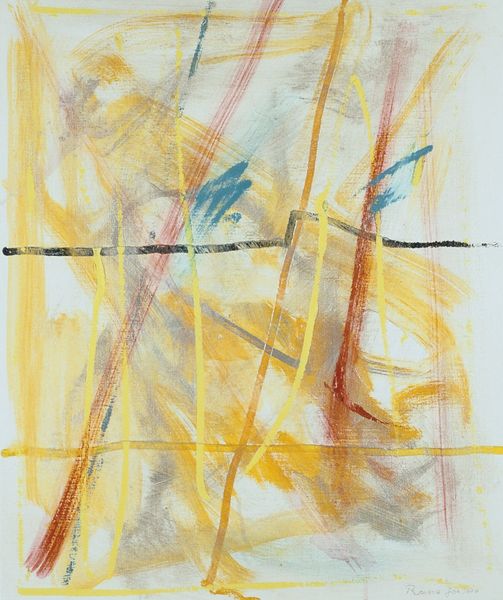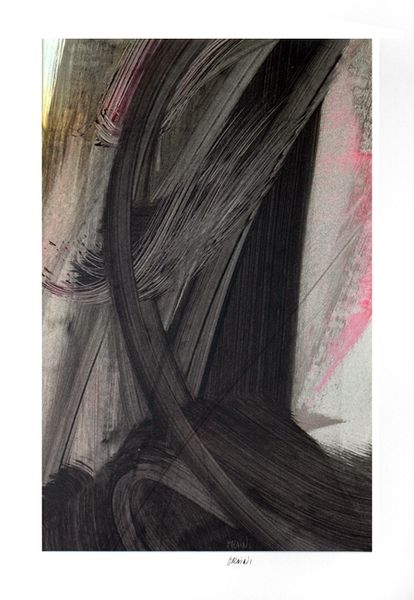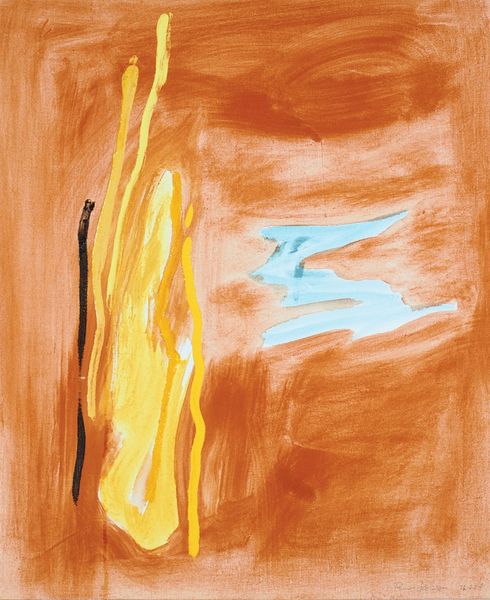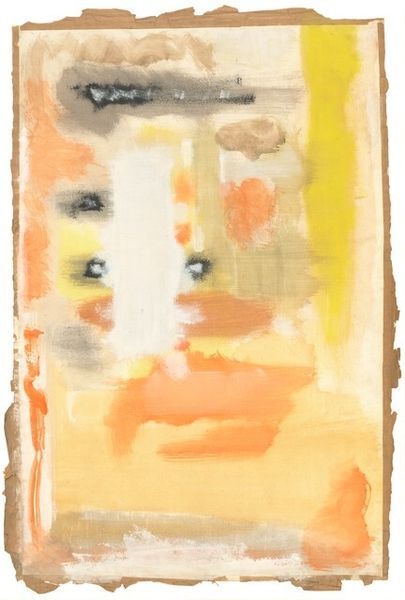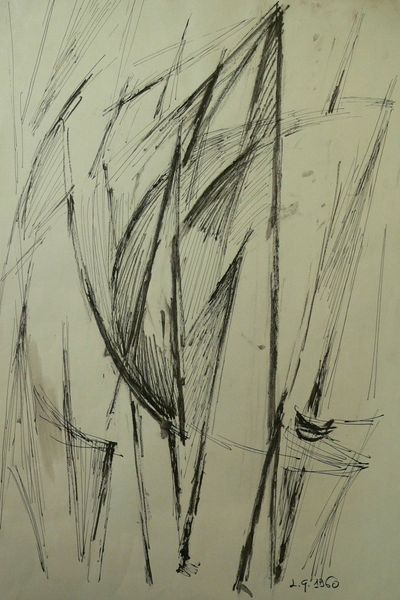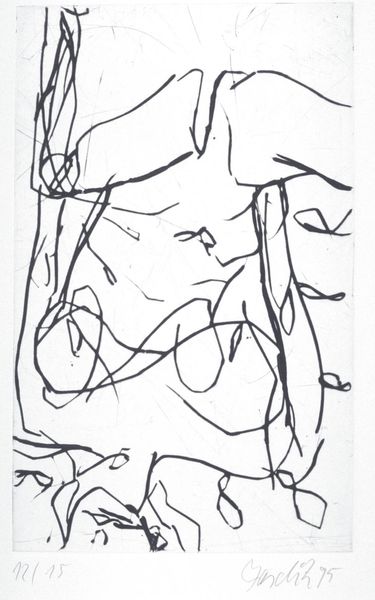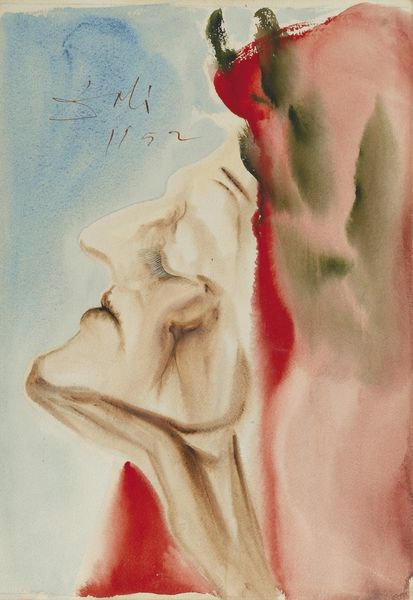
drawing, painting, watercolor, ink
#
drawing
#
painting
#
figuration
#
watercolor
#
ink
#
line
#
nude
#
modernism
Copyright: Hryhorii Havrylenko,Fair Use
Editor: So, this is Hryhorii Havrylenko's "Nude," created in 1962, using ink and watercolor. It strikes me as both delicate and raw. What do you see in this piece, particularly regarding the depiction of the body? Curator: It’s crucial to consider the socio-political environment of the time. In the Soviet Union, figuration was often tied to socialist realism, where the body was idealized and propagandistic. This “Nude,” however, seems to push back against those constraints. Do you notice how the figure is deconstructed, almost fragmented? Editor: Yes, it's like the artist is less interested in perfect representation and more in… capturing something else? Curator: Exactly. Consider the male gaze that often dominated depictions of nudes in art history. Havrylenko seems to challenge that tradition. Instead of objectifying the figure, the lines and washes of color suggest a vulnerable, perhaps even ephemeral, existence. How does this challenge expectations linked with art under oppressive regimes? Editor: It feels like a quiet act of resistance. The artist uses abstraction as a way to explore individuality and vulnerability, things that might not have been easily expressed openly at the time. Curator: Precisely. The use of line and watercolor adds to this sense of fragility, countering the monumental and heroic ideals often promoted. It asks us to consider how power impacts representation and what it means to reclaim agency through artistic expression. Editor: I see it now. This isn't just a nude study; it's a statement on artistic freedom. Thanks! Curator: Indeed, it reminds us that even within restrictions, artists find ways to communicate deeply personal and political truths. It offers us a richer understanding of modernism beyond a western perspective.
Comments
No comments
Be the first to comment and join the conversation on the ultimate creative platform.
